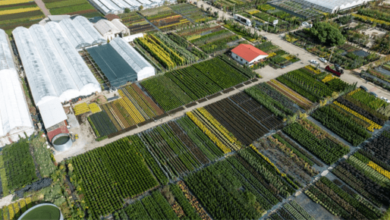1. The trapezoid ABCD is a geometric shape characterized by one pair of parallel sides, specifically AB and CD.
2. Definition of a Trapezoid
A trapezoid is a quadrilateral with at least one pair of parallel sides. In the case of ABCD, AB and CD are the parallel sides.
3. Properties of Trapezoids
Trapezoids have several unique properties, including unequal side lengths and interior angles that add up to 360 degrees.
4. Parallel Side AB
In trapezoid ABCD, side AB is parallel to side CD, forming the characteristic shape of a trapezoid.
5. Construction of Trapezoid
Trapezoid ABCD can be constructed by drawing two parallel lines AB and CD, then connecting them with non-parallel sides AD and BC.
6. Length of Parallel Sides
The length of parallel sides AB and CD may vary, but their orientation remains consistent within the trapezoid.
7. Slope of Parallel Lines
The slope of parallel lines AB and CD is identical, indicating a constant rate of change along their lengths.
8. Relationship Between AB and CD
The parallel sides AB and CD are distinct from each other but share the property of being equidistant from each other along their lengths.
9. Diagonals of Trapezoid
The diagonals of trapezoid ABCD intersect each other within the shape, forming four triangles with shared vertices.
10. Midsegment of Trapezoid
The midsegment of trapezoid ABCD is the line segment connecting the midpoints of non-parallel sides AD and BC, running parallel to AB and CD.
11. Area of Trapezoid
The area of trapezoid ABCD can be calculated using the formula: Area = ((AB + CD) * h) / 2, where h is the height of the trapezoid perpendicular to AB and CD.
12. Perimeter of Trapezoid
The perimeter of trapezoid ABCD is the sum of its four side lengths: AB + BC + CD + DA.
13. Angle Measures
The angles within trapezoid ABCD may vary in measure, with the sum of interior angles totaling 360 degrees.
14. Symmetry
Trapezoid ABCD exhibits a degree of symmetry, particularly in its parallel sides AB and CD, which are equidistant from each other along their lengths.
15. Applications in Geometry
Trapezoids, including ABCD, are commonly encountered in geometry and have applications in various mathematical and architectural contexts.
16. Real-World Examples
Examples of trapezoids can be found in everyday objects and structures, such as rooftops, bridges, and road signs.
17. Architectural Design
Architects often utilize trapezoidal shapes in building design to create visually appealing structures with dynamic angles and perspectives.
18. Engineering Applications
Engineers employ trapezoids in structural analysis and design, particularly in the construction of supports, beams, and trusses.
19. Artistic Representations
Trapezoids feature prominently in artistic representations, from abstract geometric patterns to depictions of architectural elements in paintings and sculptures.
20. Educational Use
Trapezoids, including ABCD, serve as valuable teaching tools in geometry classrooms, helping students understand concepts such as parallelism and angle relationships.
21. Problem-Solving Exercises
Problem-solving exercises involving trapezoids encourage critical thinking and spatial reasoning skills among students.
22. Further Exploration
Exploring the properties and characteristics of trapezoid ABCD can deepen one’s understanding of geometric shapes and their applications.
23. Practical Exercises
Engaging in practical exercises, such as drawing and measuring trapezoids, allows for hands-on learning and reinforcement of geometric concepts.
24. Conclusion
In conclusion, trapezoid ABCD, with parallel sides AB and CD, exemplifies the unique properties and applications of geometric shapes in mathematics and beyond.
25. Further Study
For those interested in delving deeper into the world of geometry, further study of trapezoids and their properties is highly recommended.



